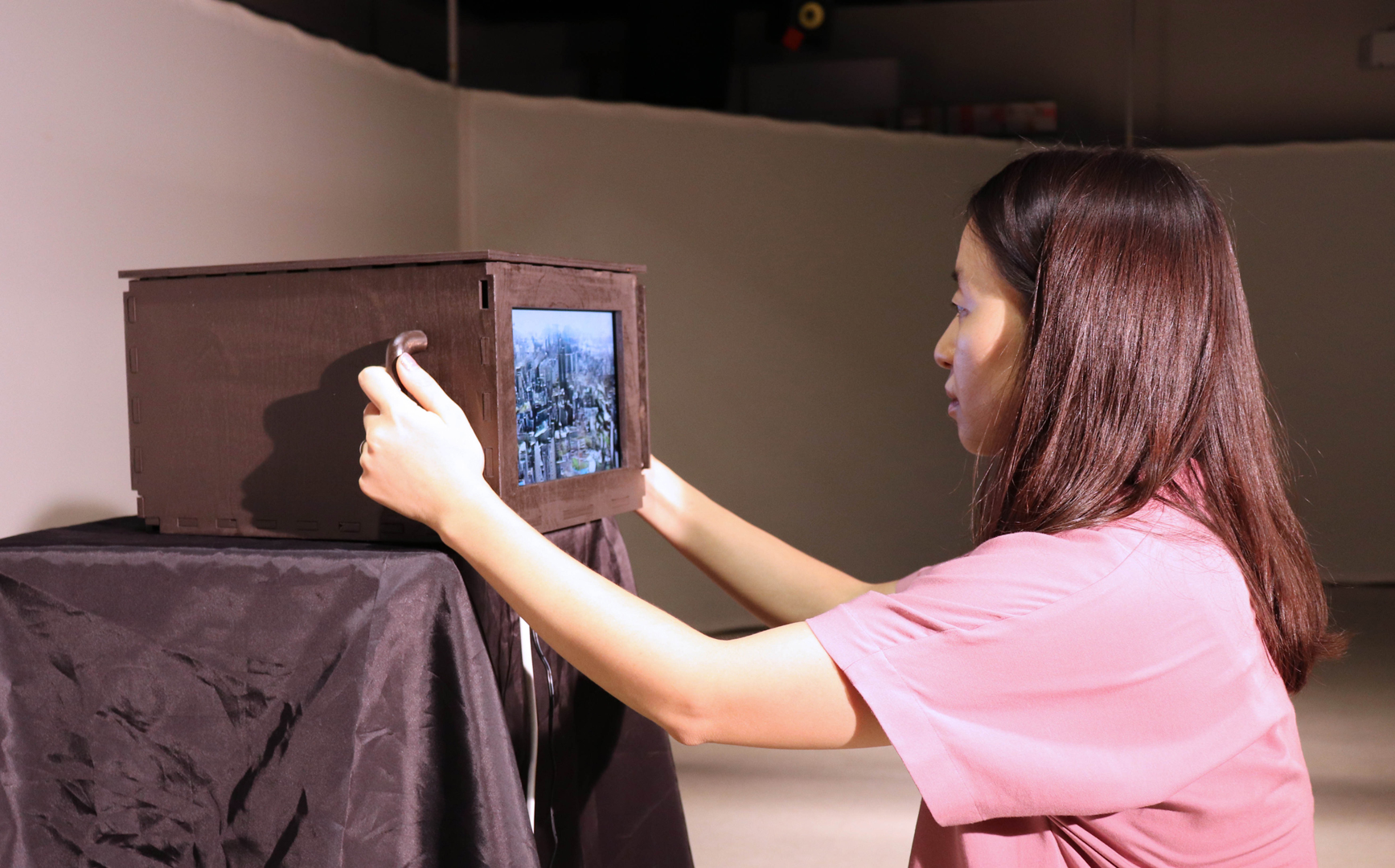Jean Ho Chu: Viewporter
Artist(s):
Title:
- Viewporter
Exhibition:
Category:
Artist Statement:
Summary
Viewporter is an interactive installation that displays a computer-generated video of a city. Viewers can rotate the screen to accelerate the playback speed of the video. The project makes an analogy between the screen and a telescope to re-think on the illusion promoted in development programs.
Abstract
Viewporter is an interactive installation that displays computer generated video of a city. Viewer rotates the screen attached to a device that resembles a telescope to accelerate the playback speed of the video. In this project, the machine learning technique is utilized to train and generate the city skyline. Images that capture the Seoul skyline with a drone was collected and trained. As one of the developed metropolitan city, Seoul is continuously being developed to construct high- rise buildings. While the image of the skyline with high-rise buildings have been utilized to symbolize dream and utopia of the city through the media, the lives of the residents with mundane duties have been far-fetched from the attractive image promoted through the propagandistic videos on media. The installation Viewporter uses the analogy of a telescope in a tourist attractions to emphasize the distance between the idealized and the real and have us re-think the illusion and fantasy that are promoted through images of development programs.
Technical Information:
A 7” screen is connected to a mac mini computer to display previously generated interactive video. The playback speed of the video is then accelerated through Max8 to respond to sensor data. A digital gyroscope (MPU 6050) with an Arduino board captures the angle of the rotation of the screen. To train and generate video, the project utilizes DCGAN programmed through a tensorflow environment. Videos on Youtube were collected that capture Seoul skyline using a drone. Image stills from the video are collected to train the system. Series of images are generated through gradually changing the noise in a 30 dimensional space and then gathered as a video. To create the enclosing that resembles a telescope, plywood was cut through a laser cutter and assembled with a rotating bearing on the bottom.
Process Information:
As a media artist and researcher, I digitally and physically recreate narratives around our personal memories, belonging, and socio-cultural issues. The installation, which often consists of an interactive system, an embodied interface, and a digital audio-video installation, stages an immersive environment of the recreated narrative. Through the installation, people become part of the story through their bodily engagement to recall and reshape those narratives. In my work, technology immerses the visitors to the recreated narratives to physically and cognitively involve the visitors of the imaginative narrative environment. Algorithms are utilized to collect, generate, and reflect the desires of our society as computer generated images. Furthermore, the embodied interface recreate sensible, reactive, and hybrid narrative experiences in a physical-digital space. Overall, my work that utilizes technology and algorithms in a humanistic way to helps us understand ourselves relates to the overall theme of SIGGRAPH Asia.
Other Information:
Inspiration Behind the Project
I was inspired by how visitors to tourist sights enjoy watching the scenic view through the telescope installed in an observatory. While the site may be an ordinary place to the residents, the setting of an observatory with a telescope makes viewing of that sight a special sightseeing event to the visiting tourists. It appeared to me that a telescope transformed our experience of a wandering navigation by foot to observing the spectacle by eye. In short, the telescope removes all the details of the inhabited space and such abstraction from a distance ends up depicting the space to an idealized scenery. Through this project, I compared the AI image generation technology to a telescope. I thought that the way AI(Artificial Intelligence) abstracts out the detail from a distance functions very similar to the telescope. While individual data may be captured within a context, such context gets lost when such data gets analyzed through an AI. Instead, the collective of data can be idealized through intention of the programmer.
Key Takeaways for the Audience
I wish that my project to be an opportunity for visitors to think about the philosophical assumptions behind the technology of AI. We often consider AI as a technology to extend human cognitions. While AI often functions through abstraction, such abstraction is only one way of reasoning.






